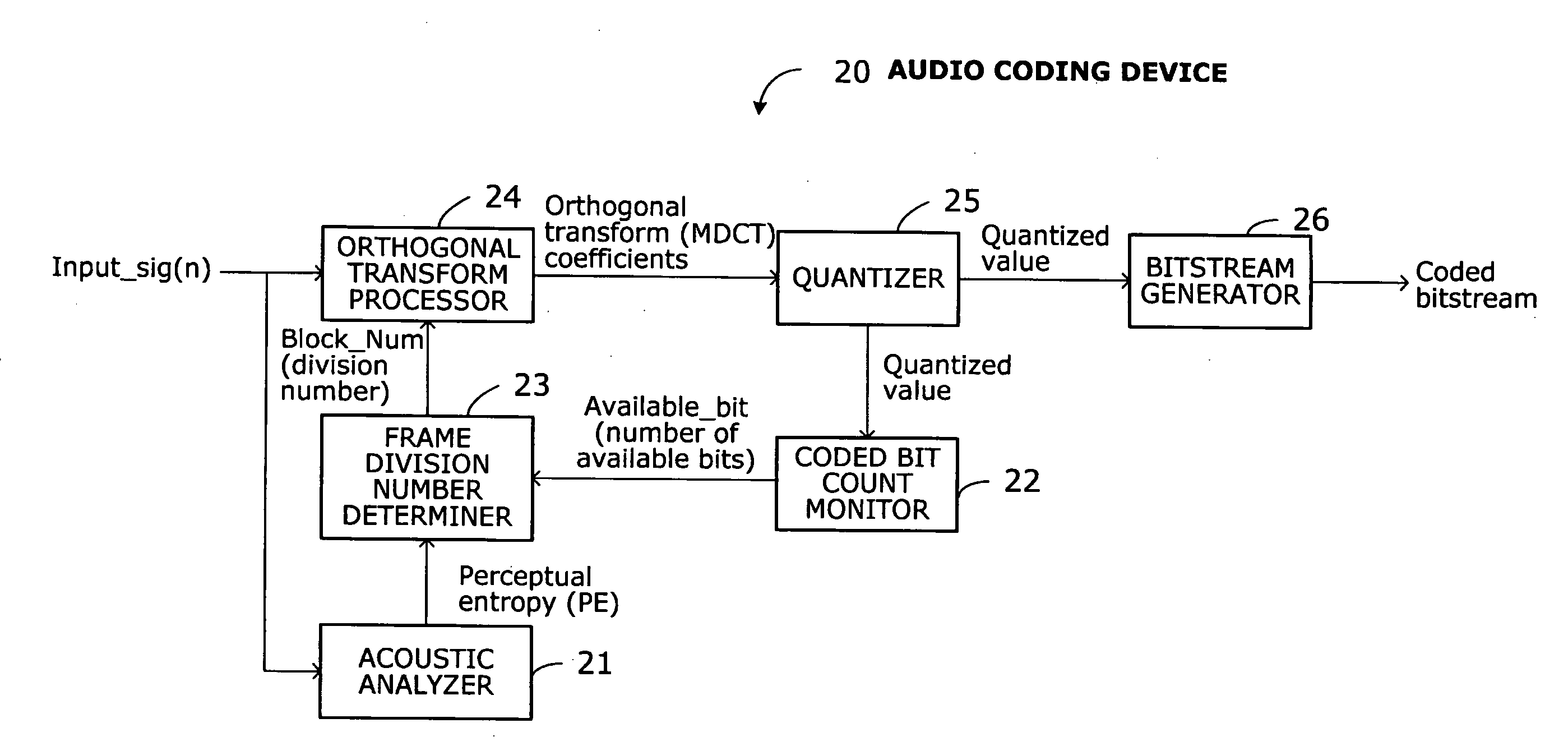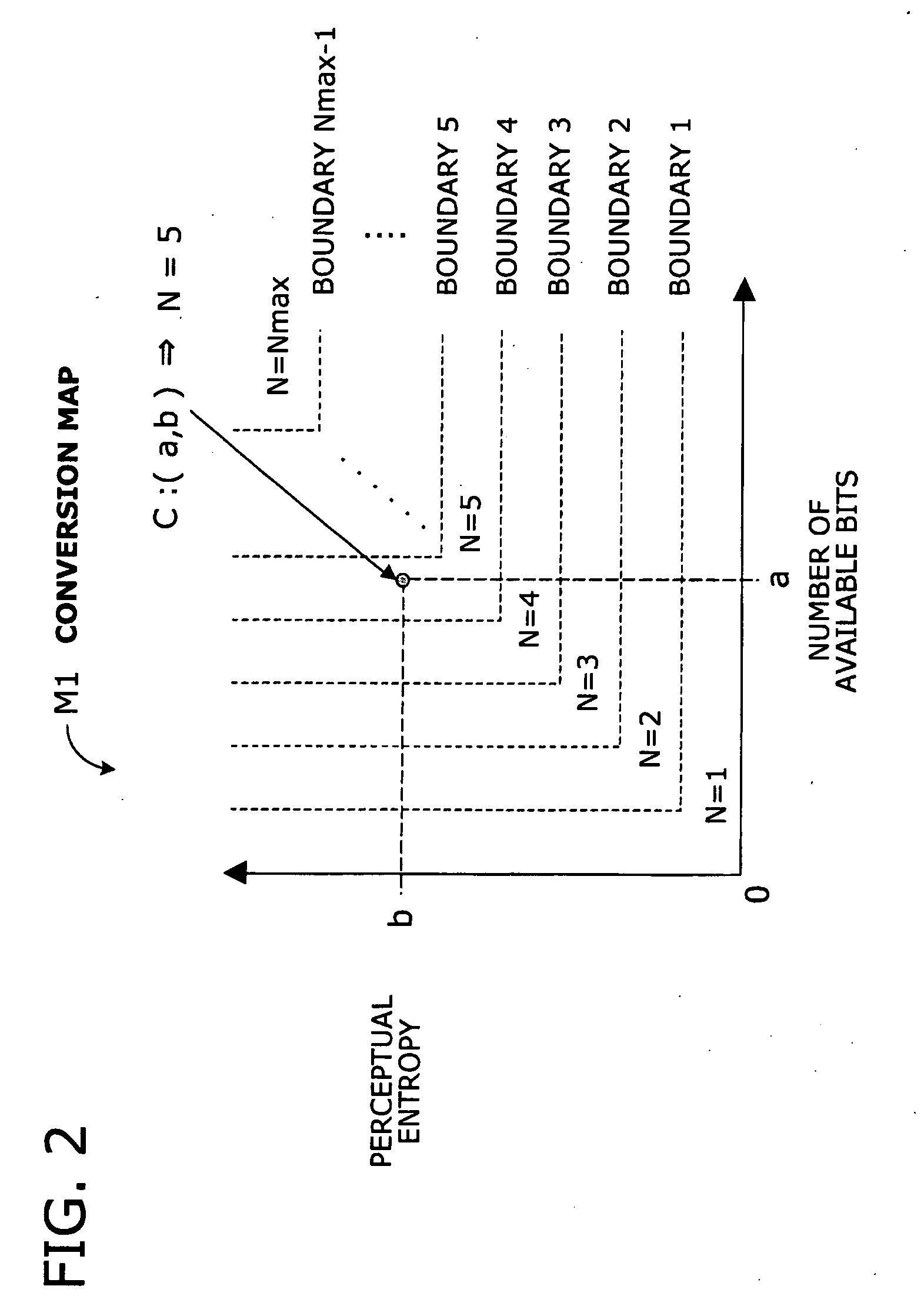Apparatus and method for encoding audio signals
a technology of audio signals and apparatus, applied in the field of apparatus and method for encoding audio signals, can solve the problems of deteriorating sound quality, attack sound section is also affected by quantization errors, and deteriorating sound quality, so as to reduce the problem of quality degradation
- Summary
- Abstract
- Description
- Claims
- Application Information
AI Technical Summary
Benefits of technology
Problems solved by technology
Method used
Image
Examples
first embodiment
[0069]Embodiments of the present invention will be described below with reference to the accompanying drawings. FIG. 1 is a conceptual view of an audio coding device according to the invention. To encode audio signals, this audio coding device 10 has an acoustic analyzer 11, a coded bit count monitor 12, a frame division number determiner 13, an orthogonal transform processor 14, a quantizer 15, and a bitstream generator 16.
[0070]The acoustic analyzer 11 analyzes an audio input signal by using the Fast Fourier Transform (FFT) algorithm. From the resulting FFT spectrum, the acoustic analyzer 11 determines an acoustic parameter called perceptual entropy (PE).
[0071]The term “perceptual entropy” PE refers to a parameter indicating how many bits are required for quantization. In other words, this parameter indicates the total number of bits required to quantize a frame without introducing a noise that is perceptible to the listener.
[0072]As described earlier, the perceptual entropy PE ta...
second embodiment
[0095]The following will now describe an audio coding device according to the present invention. FIG. 4 is a conceptual view of an audio coding device. To encode audio signals, this audio coding device 20 includes an acoustic analyzer 21, a coded bit count monitor 22, a frame division number determiner 23, an orthogonal transform processor 24, a quantizer 25, and a bitstream generator 26.
[0096]The acoustic analyzer 21 analyzes an audio input signal by using the FFT algorithm. From the resulting FFT spectrum, the acoustic analyzer 21 determines an acoustic parameter called perceptual entropy (PE).
[0097]The coded bit count monitor 22 calculates the balance of coded bits (i.e., determines how many bits are consumed) with respect to a predefined average number of quantized bits after quantization of each frame. The coded bit count monitor 22 then calculates the number of available bits (Available_bit), or the number of bits available for the current frame.
[0098]Based on the combination ...
PUM
 Login to View More
Login to View More Abstract
Description
Claims
Application Information
 Login to View More
Login to View More - R&D
- Intellectual Property
- Life Sciences
- Materials
- Tech Scout
- Unparalleled Data Quality
- Higher Quality Content
- 60% Fewer Hallucinations
Browse by: Latest US Patents, China's latest patents, Technical Efficacy Thesaurus, Application Domain, Technology Topic, Popular Technical Reports.
© 2025 PatSnap. All rights reserved.Legal|Privacy policy|Modern Slavery Act Transparency Statement|Sitemap|About US| Contact US: help@patsnap.com



